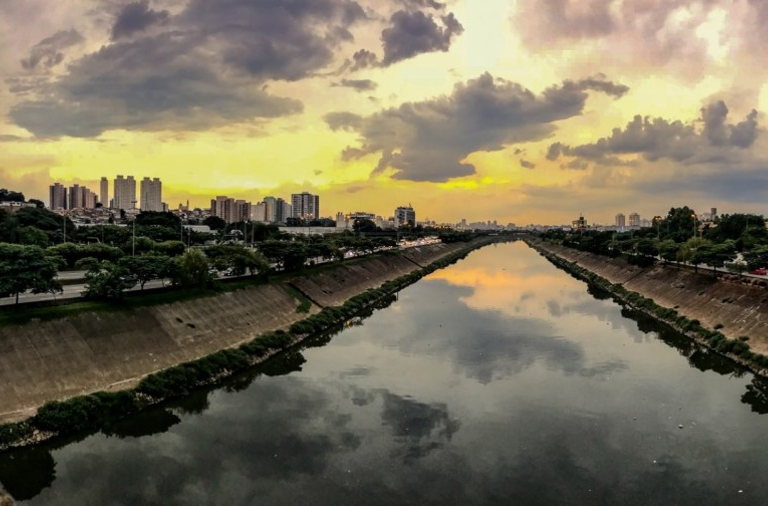Hernán Bedoya, a land rights activist in Colombia, was riding home on his horse last December when he was shot 14 times and killed. The community leader was working to protect farmers and forests from illegal land grabs by companies investing in palm oil, banana plantations, and ranching in Chocó, on the country’s west coast.
Bedoya’s assassination capped a deadly year for environmental campaigners. Global Witness, an international human rights and natural resources group, tallied 207 killings of activists in 2017, the most since the group began compiling data in 2002. Killings occurred in 22 countries, primarily in Latin America.
Fear of pollution and depletion of waterways are motivating factors for community organizers who campaign against mining, logging, irrigation, dam building, and fossil fuel extraction that destroy homes, livelihoods, and nature reserves, according to Billy Kyte of Global Witness.
“Water is a big reason why communities stand up against these projects,” Kyte told Circle of Blue.
Water pollution animates demonstrations against titanium mining in South Africa’s Eastern Cape province. Water scarcity moved Peruvian farmers to protest the Conga mine, a suspended gold and copper venture in the Andean highlands. Water is the centerpiece asset in land acquisitions by foreign conglomerates aiming to develop large-scale irrigation projects in Africa and Southeast Asia.
Global Witness categorizes the killings according to the industry the activists were protesting against. Agribusiness was the deadliest industry to oppose in 2017, followed by mining. Four people were slain because they opposed hydropower dams. Brazil was the deadliest country, with 57 killings.
Global Witness blames the rise in killings on the failure of governments to intervene, protect activists, and hold perpetrators accountable. The top suspects in the cases from 2017 are criminal gangs, soldiers, and police, Global Witness reports. Often the killers are never charged with a crime. “Impunity breeds more impunity,” Kyte said.
Because of rigorous verification standards, Global Witness’s data are the “gold standard” on the killing of environmental activists, says John Knox, a Wake Forest University law professor and the UN special rapporteur on human rights and the environment. (Knox’s UN appointment ends on August 1.)
To compile its data Global Witness scours news reports and then verifies the information with partner organizations on the ground. For a killing to be included, a victim’s name is necessary as well as the date and location of the act. For those reasons, cases are likely severely underreported in Africa, where there is less reporting and monitoring, Kyte said.
A Step Forward for Latin America
Though the number of documented killings has climbed in each of the last four years, campaigners are hopeful that change is on the horizon. In March, Knox delivered a report to the UN Human Rights Council on the obligations to protect environmental activists. The UN Environment Program then adopted a policy that it will take a more vocal role in advocating for the rights of activists.
Campaigners are most enthused by a legal development in Latin America. In March, representatives of the 33 member countries of the Economic Commission for Latin America and the Caribbean signed the Escazu Agreement, a plan for upholding human rights for environmental activists.
The agreement promotes “the protection of human rights defenders in environmental matters in a region where, sadly, they are all too often subject to attacks and intimidation,” Alicia Bárcena, the commission’s executive secretary, said at a UN event in New York on July 11.
Kyte said that because Latin America is the most dangerous region for environmental campaigners — 60 percent of the killings his group documented in 2017 happened there — the agreement is an important step. But it is only a step. Actions, not words, will indicate how serious the governments are, he said.
“It’s obvious that the proof is in the pudding for implementation,” Kyte said. “We’ve yet to see progress implemented properly.”
Knox called the agreement one of the most important human rights and environmental treaties of the last two decades.
“It’s really significant because it is a binding treaty and it sets out obligations on states,” Knox told Circle of Blue. “It’s a positive step forward for Latin America.”
Those obligations — similar to recommendations in the Global Witness report — include investigating and punishing attacks on activists, public participation of communities that will be affected by a project, access to information, and a right to live in a healthy environment.
National governments must now decide whether to endorse the principles that their emissaries negotiated. The agreement will gain legal force after 11 countries ratify it. They may begin doing so in September.
Teaser photo credit: A channelized river flows through Sao Paulo. More environmental activists were killed in Brazil in 2017 than any other country. Photo © J. Carl Ganter / Circle of Blue





